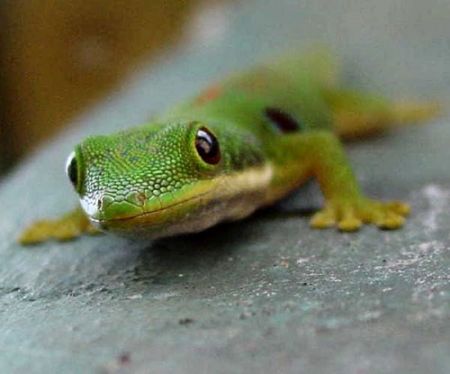
For years scientists have tried — and failed — to engineer materials that would enable robots to mimic the gecko’s ability to scale walls, windows and seemingly any other surface. Now, a team from the US has developed a nanotube material that is not just a match for gecko feet but 10 times more adhesive.
Look close enough at a gecko foot and you will see an ordered, forest-like structure — roughly half a million fine hairs that each sprout into hundreds of even thinner, spatula-shaped tips. When these tips come into close contact with a surface they induce strong van der Waals forces that keep the foot anchored — that is, until the gecko decides to peel it off.
In the past scientists have attempted to copy this hair structure by fabricating arrays of polymer pillars, but these can sustain little more than a third of the gecko’s adhesive force. Although nanotubes have proved better, it is difficult to replicate the delicate tip structure of gecko hairs that would enable the nanotubes to reach their theoretical limit.
Stuck on you
The US team, led by Zhong Lin Wang of Georgia Institute of Technology, has made a structure that looks at least similar to gecko feet through chemical vapour deposition of an ethyne–hydrogen–argon gas over a silicon substrate. By introducing an iron catalyst on the substrate and controlling the temperature and duration of deposition, the team end up with an array of vertical nanotubes with spiralled, fuzzy tips.
In tests on glass, sandpaper and plastic, Wang and colleagues found that their nanotube material exhibited adhesive forces of about 100 Ncm–2, almost an order of magnitude greater than a gecko foot (Science 322 238). That is strong enough for a 4 × 4 mm pad of the material to suspend a 1.5 kg hardback textbook. “In future work modifying the surface of the nanotubes with polymers, proteins, etc, we should be able to make the adhesive nanotubes stick to a wide variety of surfaces,” Liming Dai, one of the team members, told physicsworld.com.
Mark Geoghegan, a physicist from the University of Sheffield, UK, thinks an advantage of the US team’s fabrication technique is that it does not use expensive lithography — although it is still not cheap. “A pack of 20 super-strong carbon-nanotube post-it notes would probably cost well over $1000 per note,” he jokes.
Pulls off normally
A more fundamental advantage of Wang and colleagues’ material is that it is not stoutly adhesive in all directions. If the material is stuck to a wall it will resist a strong downwards tug, but if it is pulled directly away (that is, along the normal) the nanotubes can peel off one by one. It is this property that allows geckos to hang from walls while being able to prize off their feet to scurry around.
Dai says he and the team are now planning to optimize the structure and scale it up so that they can make “Spider-man” gloves.



